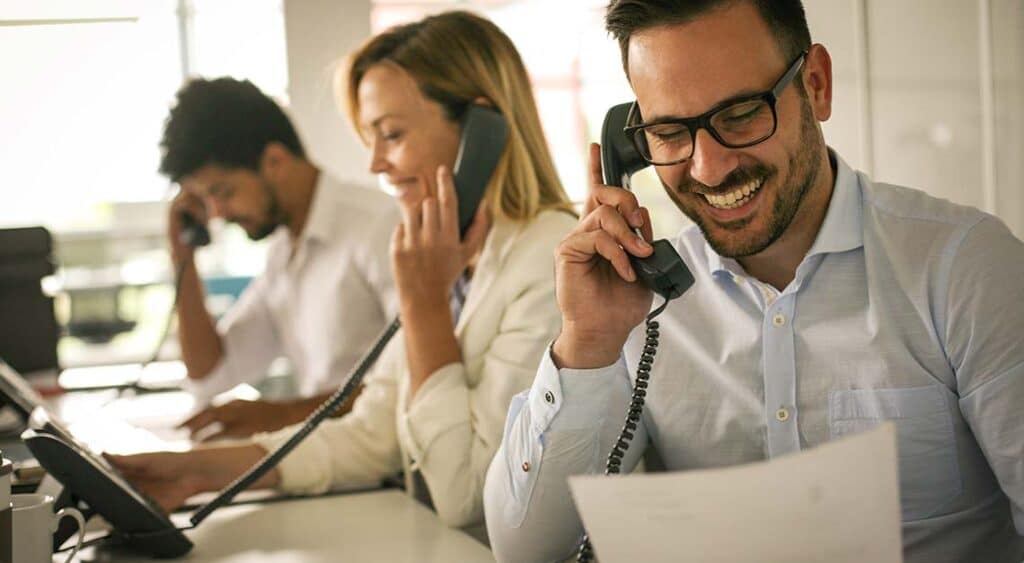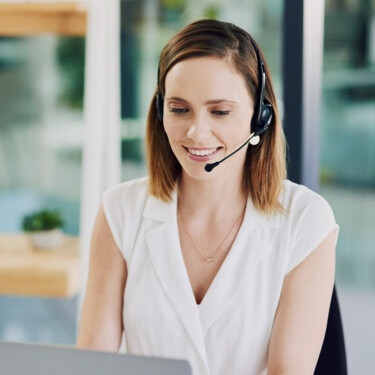All Categories
Featured
Table of Contents
- – What Are The Highest Rated Phone Answering And ...
- – How To Buy The Best What Is An Answering Service?
- – What Is The Best How Much Does An Answering Se...
- – What Is The Best How Does An Answering Servic...
- – What Is The Best Temporary Or Short-term Call...
- – What Is The Best Construction & Trades Phone...
What Are The Highest Rated Phone Answering And Messaging Service?
This device and its followers were developed by Sava Jacobson, an electrical engineer with a private consulting service. While early answering machines utilized magnetic tape innovation, most modern-day equipment utilizes strong state memory storage; some gadgets use a combination of both, with a solid-state circuit for the outgoing message and a cassette for the incoming messages.
"toll saving" listed below) (business call answering service). This works if the owner is evaluating calls and does not wish to talk to all callers. In any case after going, the calling celebration ought to be notified about the call having actually been responded to (for the most part this starts the charging), either by some remark of the operator, or by some welcoming message of the TAD, or addressed to non-human callers (e.
This holds particularly for the Littles with digitally saved greeting messages or for earlier makers (before the increase of microcassettes) with a special endless loop tape, different from a second cassette, dedicated to recording. There have actually been answer-only gadgets with no recording capabilities, where the greeting message had to inform callers of a state of existing unattainability, or e (telephone answering service).
How To Buy The Best What Is An Answering Service?

about accessibility hours. In taping TADs the welcoming generally includes an invitation to leave a message "after the beep". An answering maker that utilizes a microcassette to record messages On a dual-cassette answerphone, there is an outgoing cassette, which after the specified variety of rings plays a pre-recorded message to the caller.

Single-cassette voice mail consist of the outbound message at the start of the tape and incoming messages on the remaining space. They first play the statement, then fast-forward to the next available space for recording, then tape the caller's message. If there are lots of previous messages, fast-forwarding through them can trigger a significant hold-up.
This beep is typically described in the greeting message, requesting that the caller leave a message "after the beep". Little bits with digital storage for the tape-recorded messages do disappoint this hold-up, of course. A TAD may use a push-button control center, where the answerphone owner can ring the home number and, by getting in a code on the remote telephone's keypad, can listen to recorded messages, or delete them, even when far from house.
What Is The Best How Much Does An Answering Service Cost In 2023? For Me

Therefore the device increases the number of rings after which it answers the call (usually by two, leading to 4 rings), if no unread messages are presently stored, however responses after the set variety of rings (generally 2) if there are unread messages. This allows the owner to learn whether there are messages waiting; if there are none, the owner can hang up the phone on the, e.
Some makers also allow themselves to be from another location triggered, if they have been turned off, by calling and letting the phone ring a certain large number of times (typically 10-15). Some service suppliers abandon calls already after a smaller number of rings, making remote activation impossible. In the early days of Little bits a special transmitter for DTMF tones (dual-tone multi-frequency signalling) was regionally required for remote control, given that the formerly used pulse dialling is not apt to communicate suitable signalling along an active connection, and the dual-tone multi-frequency signalling was executed step-by-step.
Any inbound call is not identifiable with respect to these properties in advance of going "off hook" by the terminal equipment. So after going off hook the calls need to be switched to suitable devices and only the voice-type is right away accessible to a human, however maybe, nevertheless must be routed to a LITTLE BIT (e.
What Is The Best How Does An Answering Service Work? To Buy In 2023?
What if I told you that you do not need to really choose up your gadget when answering a consumer call? Somebody else will. So practical, ideal? Answering call doesn't require somebody to be on the other end of the line. Efficient automated phone systems can do the trick just as efficiently as a live representative and in some cases even much better.
An automatic answering service or interactive voice response system is a phone system that interacts with callers without a live person on the line - phone answering. When business use this innovation, clients can get the answer to a question about your organization just by utilizing interactions set up on a pre-programmed call circulation.
Although live operators upgrade the client service experience, numerous calls do not require human interaction. An easy documented message or guidelines on how a client can recover a piece of details usually resolves a caller's immediate need - business answering service. Automated answering services are a simple and effective method to direct inbound calls to the ideal individual.
What Is The Best Temporary Or Short-term Call Answering Services App?
Notice that when you call a business, either for support or item inquiry, the first thing you will hear is a pre-recorded voice greeting and a series of alternatives like press 1 for customer support, press 2 for queries, and so on. The pre-recorded choices branch off to other choices depending upon the client's selection.
The phone tree system helps direct callers to the right person or department utilizing the keypad on a mobile phone. In some circumstances, callers can use their voices. It deserves keeping in mind that auto-attendant options aren't restricted to the 10 numbers on a phone's keypad. Once the caller has picked their very first option, you can develop a multi-level auto-attendant that utilizes sub-menus to direct the caller to the best sort of assistance.
The caller does not need to interact with an individual if the auto-attendant phone system can handle their concern. The automated service can path callers to a staff member if they reach a "dead end" and require help from a live representative. It is pricey to work with an operator or executive assistant.
What Is The Best Construction & Trades Phone Answering Service?
Automated answering services, on the other hand, are significantly less costly and provide significant cost savings at an average of $200-$420/month. Even if you do not have dedicated personnel to manage call routing and management, an automated answering service enhances efficiency by enabling your group to focus on their strengths so they can more effectively spend their time on the phone.
A sales lead routed to client service is a lost shot. If a client who has product questions reaches the wrong department or gets insufficient answers from well-meaning staff members who are less trained to deal with a specific kind of question, it can be a cause of aggravation and discontentment. An automated answering system can decrease the number of misrouted calls, thus assisting your workers make better usage of their phone time while maximizing time in their calendar for other tasks.
With Automated Answering Systems, you can produce a tailored experience for both your personnel and your callers. Make a recording of your primary greeting, and just upgrade it routinely to reflect what is going on in your organization. You can create as lots of departments or menu options as you want.
Table of Contents
- – What Are The Highest Rated Phone Answering And ...
- – How To Buy The Best What Is An Answering Service?
- – What Is The Best How Much Does An Answering Se...
- – What Is The Best How Does An Answering Servic...
- – What Is The Best Temporary Or Short-term Call...
- – What Is The Best Construction & Trades Phone...
Latest Posts
Virtual Phone Answering – QLD
Trusted Live Phone Answering Near Me (Scarborough 6019)
Custom Phone Answering – Central Queensland 4700
More
Latest Posts
Virtual Phone Answering – QLD
Trusted Live Phone Answering Near Me (Scarborough 6019)
Custom Phone Answering – Central Queensland 4700